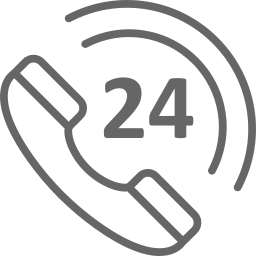Every student is different and special in his own way. This uniqueness requires different experiences and methods to learn and develop in a way that makes a child feel successful in learning. The vital part of teacher education is understanding different ways of learning. To assist students in all ways, there are many solidified learning theories that teaches can be trained for to implement in the classrooms. These learning theories can help processing different techniques to cater different needs of different students. This generates successful learning for students. There are five educational learning theories that educators can implement in the classrooms to enhance the productivity and draw an accessible learning environment for all students. The theories are cognitive learning theory, behaviorism learning theory, constructivism learning theory, humanism learning theory and connectivism learning theory (Sweller, 2020). The theories are divided in two major categories that are the developmental theories and post modern theories. The essay tends to illustrate these theories and its practices in detail of how it is helping teachers and students in the process of learning.
It is extremely difficult to explain the meaning this term theory holds because of different perspectives towards it and philosophical educational approaches towards it. In general, theory is explained as an amalgamation of factors and variables merged together to formulate the meaning of it and a system of coherent ideas. A formal theory needs itself to be dealt with changes related to the situation, requirement, area of development, and must be accountable for those changes along with peer reviews and tests. A single theory has never existed that satisfy every need of teachers and students in the process of learning but several kinds of theories suggesting different implementations and practices has offered development in education. These theories help educators to use strategies and instructional resources like technology for learning activities that assists students in participating mentally, physically, and socially (Salamon, Sumsion, Press & Harrison, 2016). Theories help teachers to:
The cognitive learning theory is associated with the mental processes involved in the process of learning and understanding the method of learning. This theory suggests that learners can learn apart from academics and can be influenced by both internal and external factors. Plato and Descartes were the first philosophers who emphasized on the concept of cognitivism and on the phenomena of human thinking. In context of cognitive psychology, Jean Piaget was claimed to be an essential figure who threw light on environment and internal structures’ impact on learning. The theory mainly reflects on the learning being successfully attained by internal and external forces through an individual’s experiences that generates an accomplished cognitive process. The theory also reflects on the control over learning that students can hold through their thinking. The cognitive theory assists students understanding their thought process that helps them learn and grow. Educators can provide students with opportunities to raise questions and think out loud. “These strategies can help students understand how their thought process works, and utilize this knowledge to construct better learning opportunities” (Kolb, Boyatzis & Mainemelis, 2001).
Sociocultural theory by Lev Vygotsky reflects the development of humans as a socially mediated process in which children absorb their cultural values, beliefs and problem solving strategies through every day living and conversations with individuals in their surroundings. The theory includes concepts like “culture-specific tools, private speech, and the zone of proximal development” (McLeod, 2014). This theory mainly describes that learning is highly influenced by social interactions and community as it sees learning as a culturally developed process specially based on human psychology. A learner cannot develop himself without having the understanding of social and cultural contexts (Lantiolf, 2007).
Sigmund Freud played a vital role in establishing psychodynamic theory of learning that helps in the growth of Behaviorism. The theory mainly focuses on the fact that children’s personality is shaped in their early years based on the methods of interactions with parents and other surrounding individuals. These interactions deeply affect a child’s brain and keep him forever under the impacts of those conversations and learning. The emotional state of a child is the centre of his personality formed by guidance of parents, clinicians and educators for many years. The theory emphasizes on the necessity of early childhood experiences in formulating one’s personality and behavior (Overton, 2007).
Behaviorism theory is the idea that reflects on how a student behaves, carries his aptitude, and interacts with the environment. The theory focuses on behaviors as the name suggests and exhibits the influence of an individual’s behavior on learning from external sources rather than internal sources. Behavioral learning theory is based on which human psychology can me measures and observed. One important element of this theory is positive reinforcement that associates with rewards which will be obtained after a particular activity. Basically, positive reinforcement refers to those behavioral acts that are directly linked to the results and rewards. In the process of teaching and learning in a classroom, this can be very well implemented for positive development and outcomes as students will learn and participate better in greed of reward along with understanding the concept of subject being taught. This helps students retain and understand knowledge and information (Boghossian, 2006).
Humanism theory suggests that the student has the authority on the methods of learning they want to pursue and all their requirements related to learning must be satisfied to provide him with quality learning. The humanistic theory approach towards learning and teaching comprises of social skills, thoughts and feelings, intellectual and artistic abilities, and pragmatic skills in their educational curriculum that helps them generate self-esteem, goals, and full autonomy as the core learning factors. The theory overall consider a child inherently good and capable of making fine decisions. The approach emphasizes on the idea of learners formulating best results for themselves and being driven by emotions rather than rewards or punishments. This helps students and teachers to understand bad behavior as the cause of unsettling emotional issues. the theory majorly contributed in understanding students’ distress and sadness when they are failing to learn. This helped educators to develop a study hall indulged with comfort, amiability and happiness that assist students focus on learning. The main principles of the theory or the area this theory has highly impacted are allowing students to have control over their education by giving them choice, generating self-motivation among students, sense of self-analyzation, assimilation of feelings and knowledge, and a secure learning environment (Huitt, 2009).
Critical theory in teaching and learning is mainly about questioning the best possible methods of education system provided to people for learning. This theory helps in developing opportunities, understanding various view points of those who have been under privileged and disadvantaged by the society like poor children who are unlikely to attend school. The theory also holds accountability for the lack of technology and good educators. It focuses on the assimilated issues of technology, politics and social change. It is a social theory that analyzes socially created structures to formulate the understanding of society and changes in society. It assists learners and educators to calculate how the world works apart from the surface of social life. Critical theory takes in consideration the subjects like biasness, discrimination and inequity in the community by giving real examples in the classroom. It helps students to remain aware of critical issues and also helps in studying the link between powers and forges. It enhances students to develop and polish themselves as a global citizen by providing them the right to question, challenge and participate in an impactful manner for the refinement of existing status quo within the communities, societies and cultures (McNaughton, 2009).
Post-Structuralism theory confronts the methods of thinking and accessing truth. The term is usually confused with the term post modernism. Post structuralism is a way of pontificating the construction of society indulged with critical practices. This perspective helps in education by generating more productive attempts towards learning and avoiding the power structures. This theory also tries to avoid making students habitual of simple solutions and reduction of information. It engages more and more educators to implement experimental ideas comprised of messiness, and unpredictability. It helps in thinking broadly about education in context of social relations and relation of power. Post structuralism has turned out to be a worth phenomena for teaching and learning because of many reasons like “enabling students and teachers to think about other perspectives and ways of seeing the world, removing restrictions of science paradigms and pedagogies that requires measurement, taking social complexities seriously, and theorizing power which opens up learning related to historical, cultural and political understandings with the potential to think beyond facts and statistics (Miller, Cable, Durry, 2011).
Teachers can implement specific techniques and practices to regularize these theories in the classrooms for the quality learning of students. These theories helps teachers to focus on creating a “well-rounded education” curriculum that will help in enhancing techniques of teaching and classroom management. These theories will also assist educators in understanding the utilization of each learning method as per the requirement and situation. Perspicacity of all the learning theories will allow teachers and students to communicate and connect with each other comfortably that will lead to an amiable and alluring environment as teachers will be able to satisfy learning needs of every kind of student by using learning perspectives. Calculating a child on the basis of his overall personality and phase he is going through will enhance a students’ aptitude and also will prepare him to participate in the world issues confidently and pragmatically.
Cognitive learning theory help students to develop through internal and external experiences, socio-cultural theory help students to learn from their surroundings, community and interactions with people, psychodynamic theory focuses on the emotional state of a child or the feelings that are making changes in his or her behavior, behaviorism theory helps students to maintain an accurate behavior and aptitude towards their education and learning, humanism theory that helps students to hone every aspect of his personality like artistic, intellectual and social activities, critical theory that allows students to question the societal issues like discrimination, inequality and other major points of communities and post-structuralism theory deals with learning and teaching by using creative and experimental methods of education in the classroom with subjects focusing on all the aspects of academics as well as history, cultures and politics.
Boghossian, P. (2006). Behaviorism, constructivism, and Socratic pedagogy. Educational Philosophy and Theory, 38(6), 713-722.
Huitt, W. (2009). Humanism and open education. Educational psychology interactive.
Kolb, D. A., Boyatzis, R. E., & Mainemelis, C. (2001). Experiential learning theory: Previous research and new directions. Perspectives on thinking, learning, and cognitive styles, 1(8), 227-247.
Lantolf, J. P. (2007). Sociocultural theory. In International handbook of English language teaching (pp. 693-700). Springer, Boston, MA.
MacNaughton, G. (2009). Exploring critical constructivist perspectives on children's learning. In A. Anning, J. Cullen & M. Fleer (Eds.), Early childhood education: Society and culture (vol. 2, pp. 54-63). London: Sage Publications Ltd.
McLeod, S. A. (2014). Lev vygotsky.
Miller, L., Cable, C., & Drury, R. (Eds.). (2011). Extending professional practice in the early years. Sage.
Overton, W. F. (2007). Developmental psychology: Philosophy, concepts, methodology. Handbook of child psychology, 1.
REFERENCES
Salamon, A., Sumsion, J., Press, F., & Harrison, L. (2016). Implicit theories and naïve beliefs: Using the theory of practice architectures to deconstruct the practices of early childhood educators. Journal of Early Childhood Research, 14(4), 431-443.
Sweller, J. (2020). Cognitive load theory and educational technology. Educational Technology Research and Development, 68(1), 1-16.
Remember, at the center of any academic work, lies clarity and evidence. Should you need further assistance, do look up to our Arts Assignment Help

Get 24x7 instant assistance whenever you need.

Get affordable prices for your every assignment.

Assure you to deliver the assignment before the deadline

Get Plagiarism and AI content free Assignment

Get direct communication with experts immediately.
Secure Your Assignments
Just $10
Pay the rest on delivery*

It's Time To Find The Right Expert to Prepare Your Assignment!
Do not let assignment submission deadlines stress you out. Explore our professional assignment writing services with competitive rates today!
Secure Your Assignment!